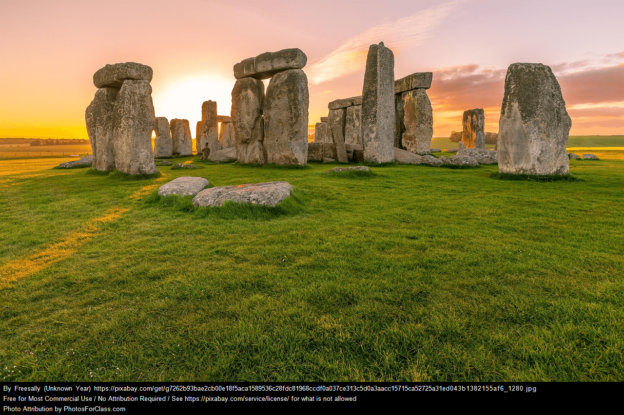Let me first take you back some 47 years. It is 19th of June 1976 at Stonehenge. In anticipation of the solstice a new group of people are coming to meet the stones. Many are coming from London, others from across the country, a small number from abroad. The British press struggles to represent them. They go with a sardonic-colonial-anthropological shade, as if they are reporting on a distant, far away tribe, unknown to us modern people. Many of the portraits of these early festival goers are caustic – after all the hippies had been in circulation for a couple of decades by this point, and this derisive tone is almost the middle ground between the desire to either vilify or save them. Yet, by the mid-seventies, as festivals are becoming bigger events, hippies are no longer the only type of people expected to turn up, and so the media either distinguishes the new tribes from the hippies, or reinforces the well-known laid-back, drug-taking image. Here are a few of these exoticized portraits:
‘He lives for most of the time with his wife Jill, and daughter Alice, aged three, with other Tipi people on a 40 acres farm in South Wales, owned by one of their number. They feed themselves as far as possible from the produce of the farm, make their own clothes, get light from candles and heat from logs built in the middle of the tent, which is so constructed that currents of air carry the smoke out through the top. “I am here for the solstice sun dance” he said. “Stonehenge is a very powerful spiritual centre.’ (‘Warning fails to deter pop enthusiasts at Stonehenge’ in Times, 19 June 1976).
‘The great Stonehenge Strip got under the way yesterday strictly against […] regulations. […] The hippies ignored the ban and rolled up to pitch their tents near the ancient stones above. As you can see (referring to nudity in the adjoining pictures) many didn’t wait for Sunday morning’s druid ceremonies to get in a bit of sun worshiping.’ (‘Rock Bottom!’ Daily Mirror, 19 June 1976).
‘The hippies claim that the ancient stones and the sun are of spiritual significance to them and that the midsummer solstice is a holy date to them’ (‘Festival goes pop – but quietly’, Southern Evening Echo, 19 June 76).
This was the new stage of a revival of the solstice into a new spiritual Contemporary Pagan tradition. But what is the meaning of the highest point in summer in the context of global heating? What is becoming of the festival celebrations of the summer solstice in the Anthropocene? My own research with climate activists, who often draw on Pagan spirituality, suggests that the voices of those who revived the summer solstice as a religious celebration in the 1960s and 1970s are now changing. The stories of the solstice are drying out. We hear instead the otherworldly silent cries of strange future beings – the Red Rebels of Extinction Rebellion marches. This is not a loss – but a transformation – of tradition.
Many scholars have claimed that increased mobility and globalisation in our contemporary world is impacting on the established channels for cultural transmission, leading to increased secularisation and a loss in traditional cultural values. Others have shown that the transmission of religious and other cultural elements may continue despite decline or disruptions in such institutions as the church, communities of place, the traditional family and so on. We increasingly live in a world dominated by change, uncertainty and risk, and scholars recognised that the implications of living with unprecedented global risk in a detraditionalised society involve the development of new types of subversive movements. (Macnaughton and Urry,1998: 70) Summer festivals developed in this context and against such global trends, during the past five or six decades. And they often had the solstice as a distinct focus.
It is true that over the past five to six decades, festival networks have developed a model drawn from the memorialisation of the free festivals of the 1960. Woodstock’s and Glastonbury’s iconic naked festival bodies were displaying a nostalgic re-enactment of and yearning for a simpler past and community. Especially in the UK, given the links with Stonehenge, the solstice provided a focus for this spiritual revival. But in recent years, transnational festival networks, like the Burning Man festival, have consciously promoted novel and subversive community-oriented spiritual practices. Modern festivals’ tribal aesthetic may suggest a return to tradition, but in fact many countercultural festivals with roots that go back to the 1960s have acted as acculturative hubs, helping us to make sense of climate change, experiment with surviving in the arid heat of the Nevada desert, and develop an eco-conscious community spirituality (Pike, 2005).
In the context of my own work on festivals and protestivals connected to the British climate movement I have argued that modern festivals, often like the pilgrimage sites of the ancient and pre-modern word, are platforms for innovation, change and acculturation (Nita, 2022). The solstice revival was always culturally subversive, and I would argue it was always making space for cultural change. And never was cultural change more urgently needed than the Anthropocene.
References
Macnaughton, Phil and John Urry. 1998. Contested Natures. Sage: London.
Nita, Maria, and Jeremy H. Kidwell. 2022. Festival Cultures: Mapping New Fields in the Arts and Social Sciences. Cham: Palgrave Macmillan.
Pike, Sarah. 2005. ‘Burning Man’. In Taylor, Bron ed The Encyclopaedia of Religion and Nature. London & New York: Thoemmes Continuum.

